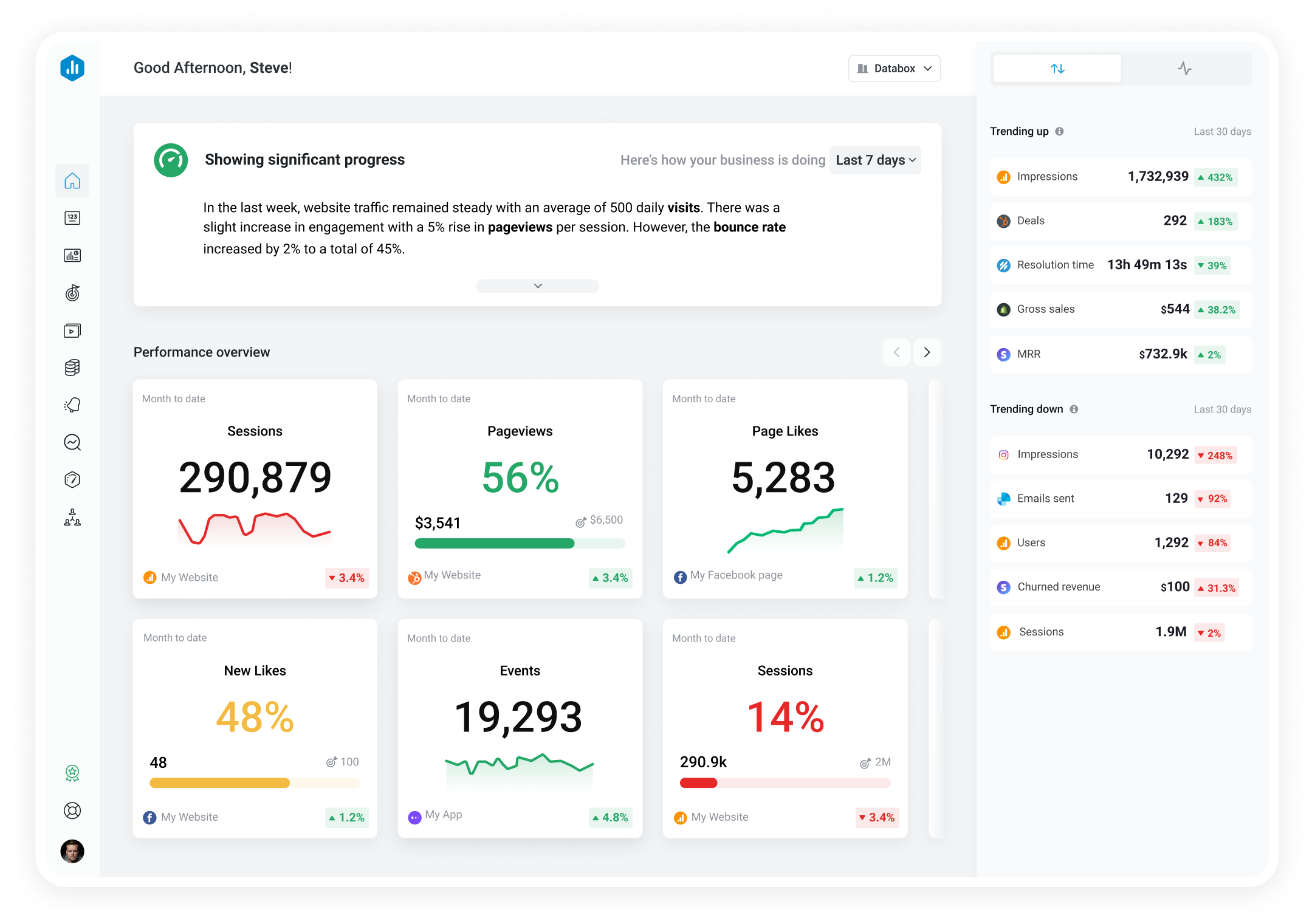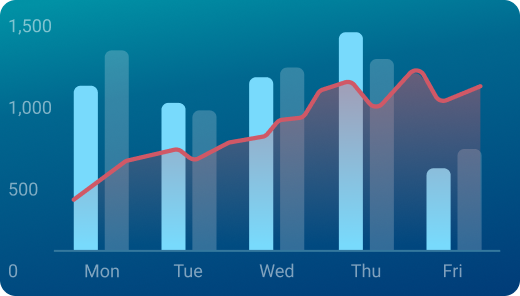Track all of your key business metrics from one screen
GET STARTED
 HubSpot Marketing
New Visitor Sessions by Source
HubSpot Marketing
New Visitor Sessions by Source New Visitor Sessions by Source measures the number of website visits made by unique users who have never visited the site before, broken down by the source of their visit (i.e. search engines, direct traffic, social media, etc.) in Hubspot.
With Databox you can track all your metrics from various data sources in one place.

Used to show comparisons between values.
Databox is a business analytics software that allows you to track and visualize your most important metrics from any data source in one centralized platform.
To track New Visitor Sessions by Source using Databox, follow these steps:
 Goals
Goals Scorecards
Scorecards Metric Digest
Metric Digest Metric Builder
Metric Builder Data Calculations
Data Calculations Performance Screen
Performance Screen